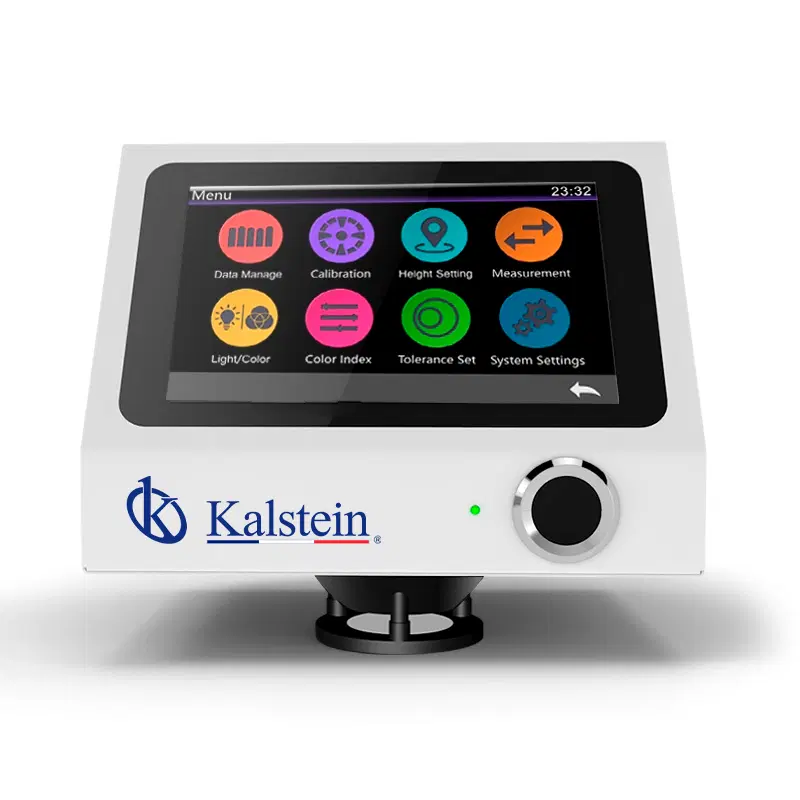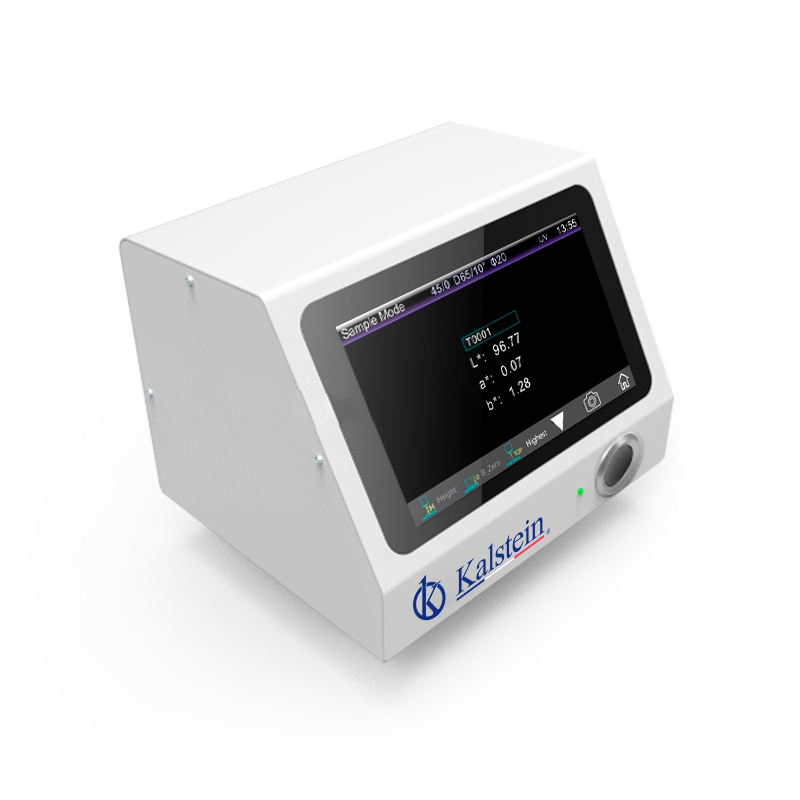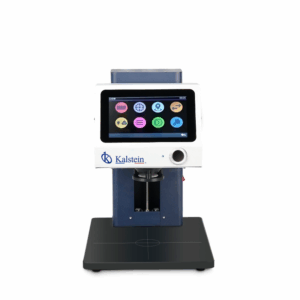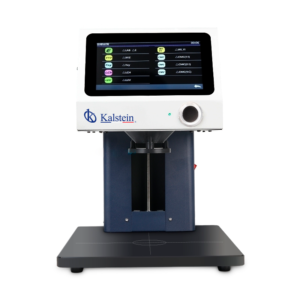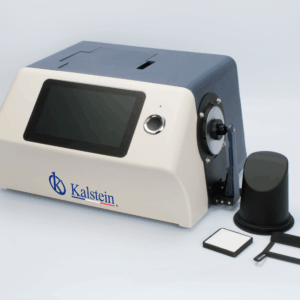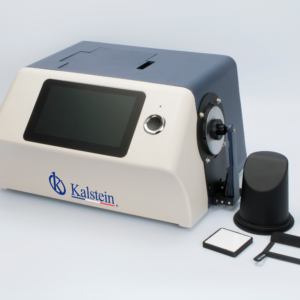Description
The Non-contact Benchtop Spectrophotometer YR05480 is a state-of-the-art tool designed for precision color measurement in various industries. This innovative device uses non-contact technology to accurately analyze liquids, sauces, powders, and other delicate materials, ensuring no risk of contamination. With its D/8 optical geometry featuring diffuse illumination and an 8° SCI reception, the YR05480 provides stable and consistent measurements. The spectrophotometer boasts a dual-array 256-pixel CMOS sensor for high optical resolution, enhancing both measurement speed and reliability. Its full-spectrum LED light source with advanced concave grating technology offers a complete spectral distribution, optimizing accuracy and reducing maintenance costs.
Market Price
The YR05480 non-contact spectrophotometer is strategically priced to remain competitive within the high-end color analysis market. It represents a valuable investment for industries demanding rigorous quality control, offering durability and precision measurements that stand up to industrial environments. For a price quote customized to your specific needs, visit the Kalstein Plus platform, where you can generate a no-obligation quote seamlessly.
Frequently Asked Questions
- Is the YR05480 suitable for measuring liquids and powders?
Yes, its non-contact design makes it ideal for measuring liquids, powders, and other sensitive materials without causing damage or contamination. - How many measurements can the device store?
The device can store up to 48,000 measurements across sample and continuous statistics modes. - Is it possible to adjust the measurement time?
Yes, measurement time can be adjusted between 0.2 and 1.5 seconds based on user settings.
Advantages and Disadvantages
The YR05480 offers several advantages, including precise non-contact measurement capabilities, compatibility with various color spaces, and fast measurement speeds allowing over 400,000 samples to be analyzed daily. A potential drawback is the need for periodic calibrations in high-use settings to maintain optimal accuracy.
Field Use
The spectrophotometer is ideal for application in industries such as food, plastics, ceramics, and cosmetics where color precision is essential. Its advanced technology ensures reliable real-time data, facilitating quality control in streamlined production lines and detailed analysis in research and development laboratories.
Recommendations
To maintain the longevity and performance of the YR05480, periodic calibrations and controlled environmental conditions are recommended. Proper measurement distance adjustment and mode adaptation according to sample type will ensure consistent results. For a personalized quote, visit Kalstein Plus and explore how the YR05480 non-contact benchtop spectrophotometer can enhance your quality control processes, guaranteeing precision in every measurement.
Features
The YR05480 offers notable features such as non-contact testing, high measurement speed, customizable software functions, and robust data storage capabilities. These features make it an excellent choice for automated production lines requiring consistent quality control.
Technical Specifications
| Model | YR05480 |
| Optical Geometry | D/8 (diffuse illumination, reception at 8°, SCI includes specular reflection light); |
| Complies with CIE standard No.15, GB/T 3978, GB 2893, GB/T 18833, ISO7724-1, ASTM E1164, DIN5033 Teil7 | |
| Features | Non-contact test between the test probe and the tested sample, for accurate non-contact color measurement. Measurement time adjustable from 0.2 to 1.5 seconds, customizable software functions. |
| Light Source | Full-spectrum LED light source, UV light source |
| Spectrophotometric Mode | Concave grid |
| Sensor | 256-pixel dual-matrix CMOS image sensor |
| Wave Range | 400~700nm, 10nm output |
| Measured Reflectance Range | 0-200% |
| Measuring Aperture | Φ20mm (Φ10mm can be customized) |
| Non-contact Distance | 3.0 mm (±0.2 mm) |
| Sample Height | Unlimited thickness, only test probes are used |
| Distance Adjustment Method | Fixed height according to actual sample |
| Measuring Mode | Software customization function (additional customization function to be evaluated) |
| Locating | Camera location |
| Color Space | Laboratory CIE,XYZ,Yxy,LCh,LUV CIE,Musell,s-RGB,HunterLab,βxy,DIN Lab99 |
| Color Difference Formula | ΔE*ab,ΔE*94,ΔE*cmc(2:1),ΔE*cmc(1:1),ΔE*00,ΔE(Hunter),DINΔE99. |
| Other Colorimetric Index | WI (ASTM E313, CIE/ISO, AATCC, Hunter), |
| YI(ASTM D1925,ASTM 313), | |
| Index of metamerism MI, | |
| Stain resistance, color fastness, strength, opacity | |
| Observer Angle | 2°/10° |
| Illuminant | D65,A,C,D50,D55,D75,F1,F2(CWF),F3,F4,F5,F6,F7(DLF),F8,F9,F10(TPL5),F11(TL84),F12(TL83/U30) |
| Data Shown | Spectrogram/values, sample chromaticity values, color difference/graphic values, color simulation, pass/fail result, display tolerance can be configured |
| Measuring Time | As fast as 0.2 seconds |
| Data Storage | Sample mode + Quality control mode 18,000 |
| Continuous statistical mode 30,000, for a total of not more than 48,000 | |
| Repeatability | Spectral reflectance: within 0.1% of standard deviation |
| Chromaticity value: ΔE*ab within 0.03 (after warming up and calibrating the instrument, measure the average value of the slate 30 times within 5 s). | |
| Error Between Instruments | Within ΔE*ab 0.2 (Average value measured from 12 mosaics of BCRA series Ⅱ). |
| Method of Measurement | Single measurement, average measurement (2~99 times) |
| Dimension | 200*200*160mm (test probe) |
| Weight | Approx. 3 kg (test probe only) |
| Energy | AC 24V, power adapter power supply 3A |
| Illuminating Life | 5 years, more than 3 million times measurements |
| Monitor | 7-inch TFT color LCD, capacitive touch screen |
| Data Port | USB, Bluetooth®5.0 |
| Language | Simplified Chinese, Traditional Chinese, English |
| Operating Environment | 0~40 ℃, 0~85 % RH (non-condensing), altitude: less than 2000 m |
| Storage Environment | -20~50℃, 0~85%RH (no condensation) |
| Standard Accessory | Power adaptor, manual, data cable, standard calibration plate, black calibration box |
| Notes | This model is especially suitable for optimized production lines, deep customization of functions will incur additional customization costs. |


